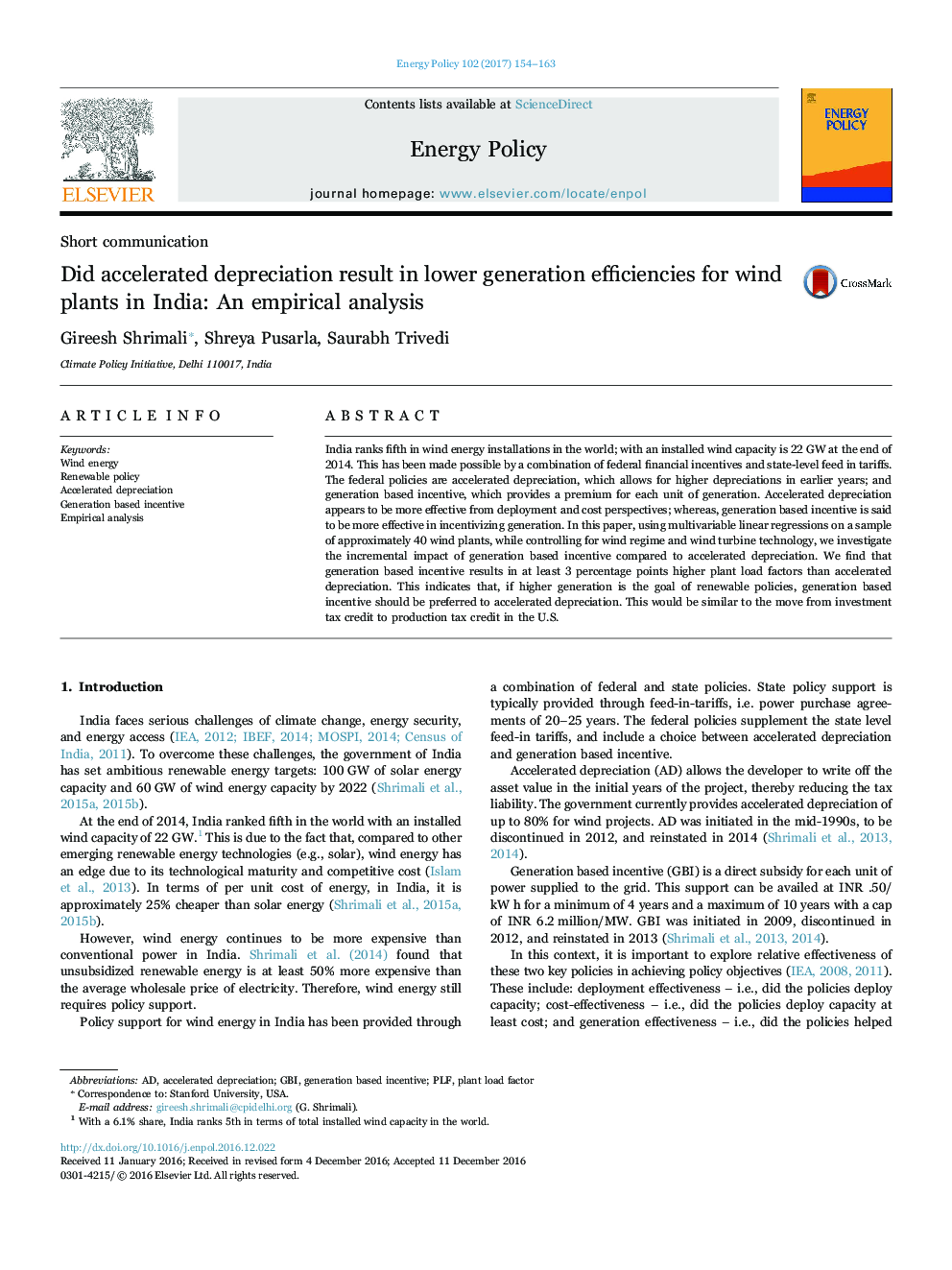| کد مقاله | کد نشریه | سال انتشار | مقاله انگلیسی | نسخه تمام متن |
|---|---|---|---|---|
| 5106220 | 1481256 | 2017 | 10 صفحه PDF | دانلود رایگان |
عنوان انگلیسی مقاله ISI
Did accelerated depreciation result in lower generation efficiencies for wind plants in India: An empirical analysis
ترجمه فارسی عنوان
آیا کاهش تسریع در نتیجه کارایی تولید نسل پایین برای گیاهان بادی در هند منجر شد؟ یک تحلیل تجربی
دانلود مقاله + سفارش ترجمه
دانلود مقاله ISI انگلیسی
رایگان برای ایرانیان
موضوعات مرتبط
مهندسی و علوم پایه
مهندسی انرژی
مهندسی انرژی و فناوری های برق
چکیده انگلیسی
India ranks fifth in wind energy installations in the world; with an installed wind capacity is 22Â GW at the end of 2014. This has been made possible by a combination of federal financial incentives and state-level feed in tariffs. The federal policies are accelerated depreciation, which allows for higher depreciations in earlier years; and generation based incentive, which provides a premium for each unit of generation. Accelerated depreciation appears to be more effective from deployment and cost perspectives; whereas, generation based incentive is said to be more effective in incentivizing generation. In this paper, using multivariable linear regressions on a sample of approximately 40 wind plants, while controlling for wind regime and wind turbine technology, we investigate the incremental impact of generation based incentive compared to accelerated depreciation. We find that generation based incentive results in at least 3 percentage points higher plant load factors than accelerated depreciation. This indicates that, if higher generation is the goal of renewable policies, generation based incentive should be preferred to accelerated depreciation. This would be similar to the move from investment tax credit to production tax credit in the U.S.
ناشر
Database: Elsevier - ScienceDirect (ساینس دایرکت)
Journal: Energy Policy - Volume 102, March 2017, Pages 154-163
Journal: Energy Policy - Volume 102, March 2017, Pages 154-163
نویسندگان
Gireesh Shrimali, Shreya Pusarla, Saurabh Trivedi,
